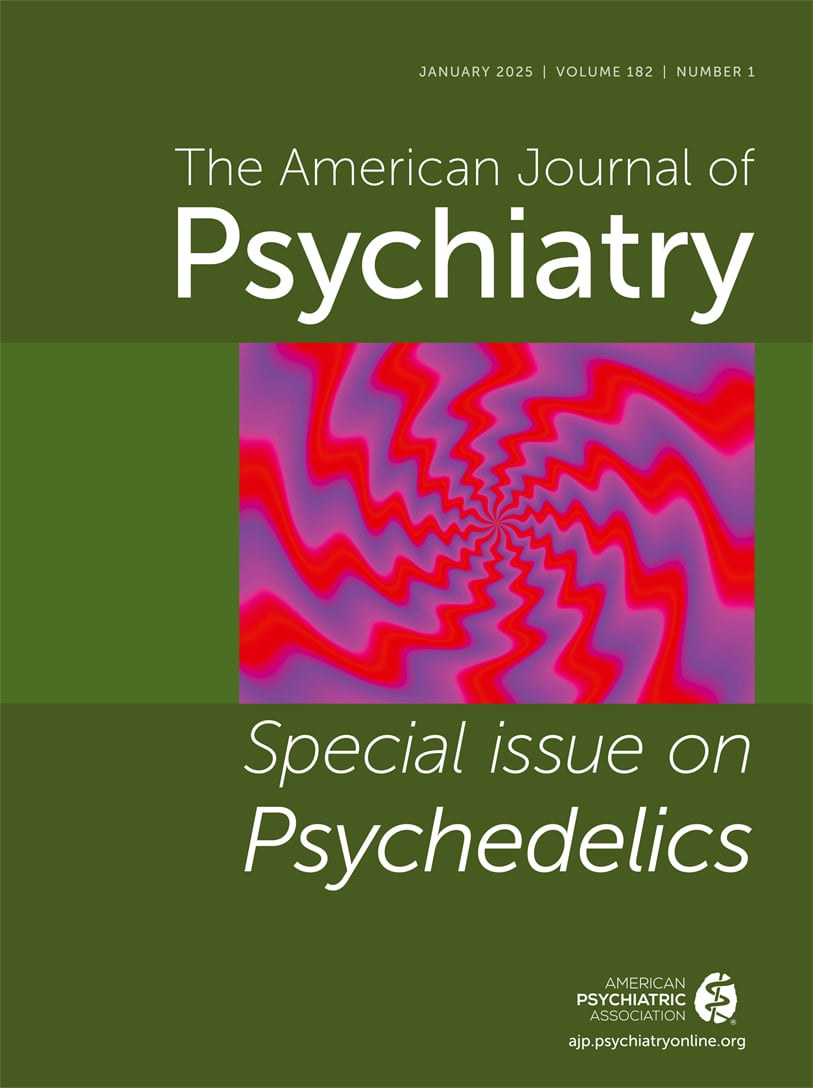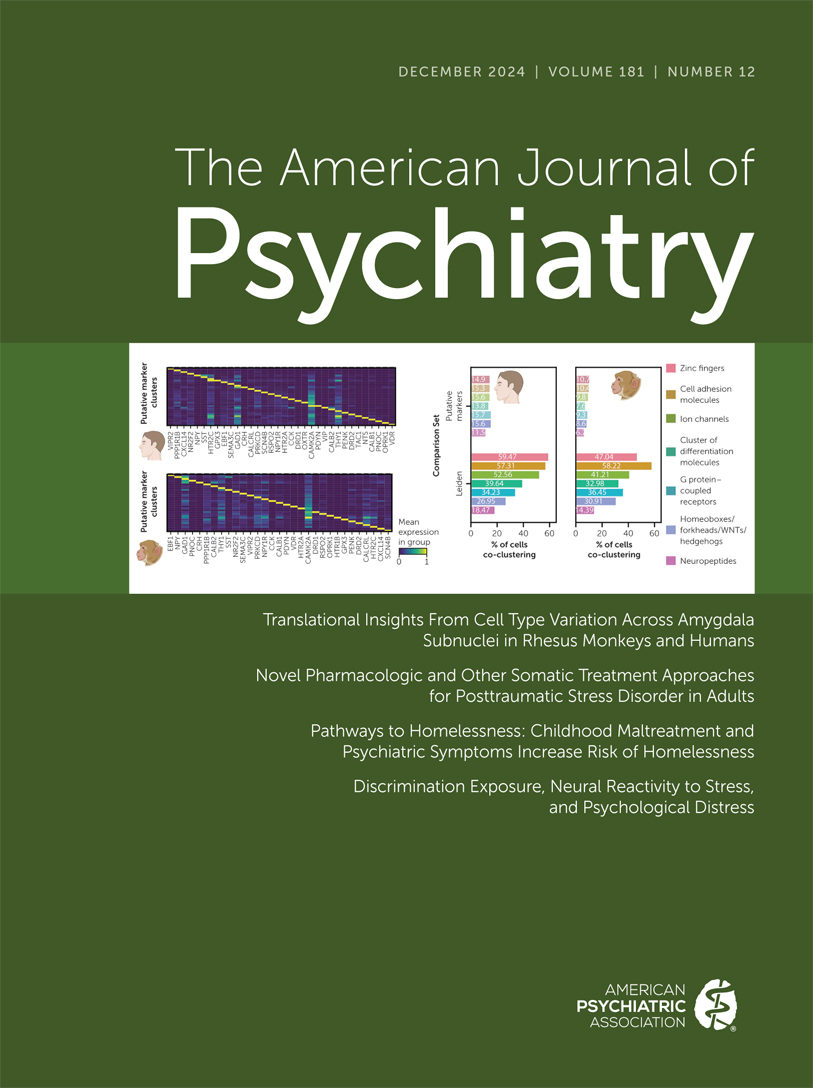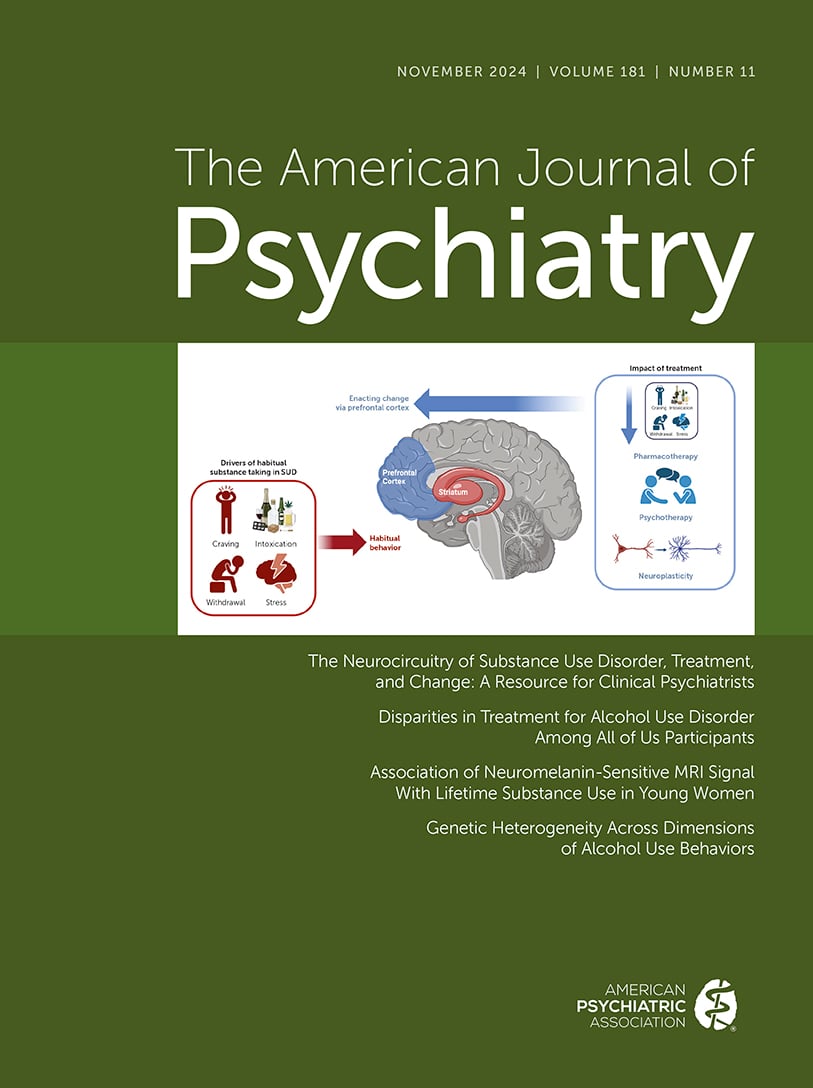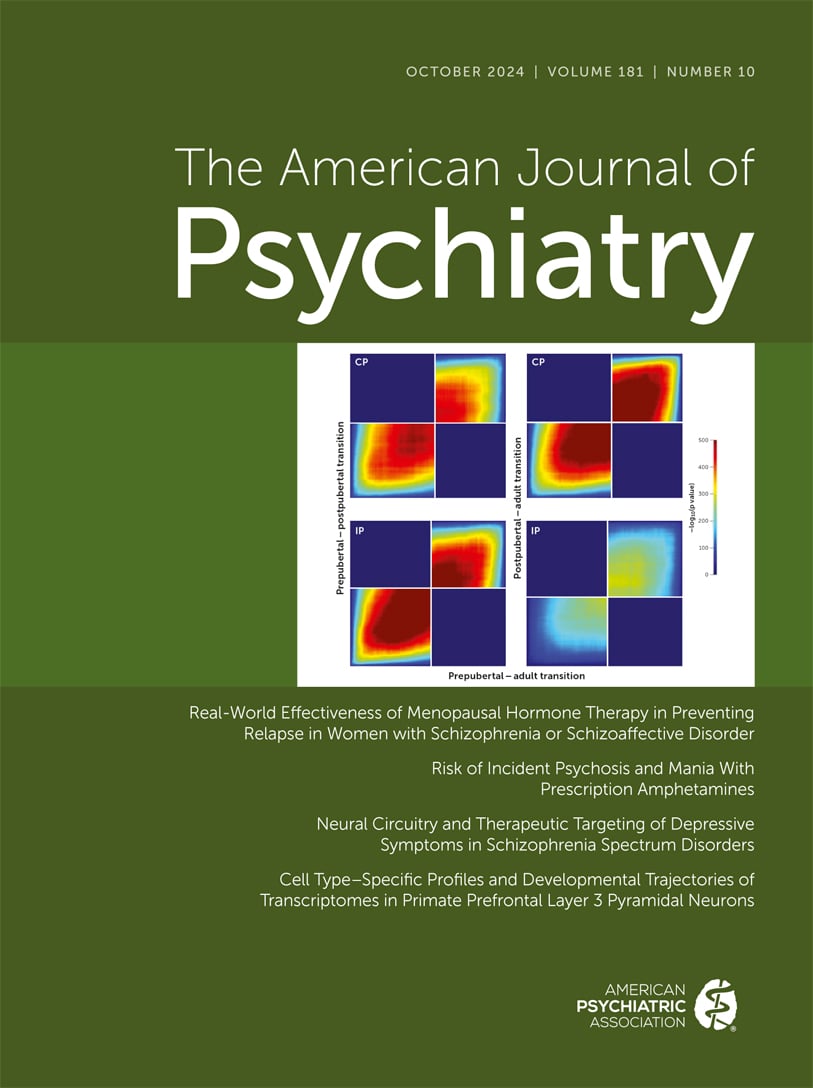American Journal of Psychiatry
- Volume 125
- Number 4
- October 1968
Article
Publication date: 01 October 1968
Pages445–457The question posed by the title of this paper has been debated in the psychiatric literature both here and abroad for many years, as evidenced by such distinctions as endogenous vs. psychogenic or reactive, and psychotic vs. neurotic, forms of depression. ...
https://doi.org/10.1176/ajp.125.4.445Publication date: 01 October 1968
Pages458–472In this paper the author attempts to connect theory, general programmatic approaches, and specific programs related to family-oriented preventive programs in a systematic and meaningful way. His theoretical framework views the family as a flexible social ...
https://doi.org/10.1176/ajp.125.4.458Publication date: 01 October 1968
Pages473–481To examine the diagnostic and therapeutic significance of the EEG pattern called 14 and 6 per second positive spiking, when it occurs in patients with behavior disorders, the authors studied 78 adolescent and young adult inpatients. Although they did find ...
https://doi.org/10.1176/ajp.125.4.473Publication date: 01 October 1968
Pages482–486The authors describe the somewhat unexpected results they obtained by questioning psychiatric residents, nurses, and patients about what they thought had been helpful during psychiatric hospitalization. Nursing was mentioned frequently by patients, rarely ...
https://doi.org/10.1176/ajp.125.4.482Publication date: 01 October 1968
Pages487–491A double-blind study involving 29 patients was designed to investigate the efficacy of lithium compared with imipramine in the treatment of acute endogenous depression. After two to three weeks, there was evidence of a moderate to strong antidepressant ...
https://doi.org/10.1176/ajp.125.4.487Publication date: 01 October 1968
Pages492–498In a longitudinal outpatient study, the authors found that lithium produced a mild decrease in depth of depression scores among patients who had been on the drug for more than seven months, as compared with patients who had been receiving lithium less ...
https://doi.org/10.1176/ajp.125.4.492Publication date: 01 October 1968
Pages499–512A longitudinal double-blind study of two manic patients treated in a random fashion with lithium carbonate and placebo is reported. Daily ratings of mania were recorded independently by a trained psychiatric nursing team and by a psychiatrist. The major ...
https://doi.org/10.1176/ajp.125.4.499Publication date: 01 October 1968
Pages512–519The authors review the evidence for their conclusion that acutely manic patients retain more lithium ion and distribute it differently in the total body water than do normothymic patients. The pattern of lithium ion retention and distribution was studied ...
https://doi.org/10.1176/ajp.125.4.512Publication date: 01 October 1968
Pages520–527The increasing use of lithium in the treatment of manic-depressive disorder raises the risk of poisoning, either by mismanagement of treatment or by accident. The authors report on the prodromes, clinical pictures, and outcomes of eight cases of lithium ...
https://doi.org/10.1176/ajp.125.4.520Publication date: 01 October 1968
Pages527–530The authors report a possible long-termn side effect of lithium treatment in cases of manic-depressive disease. They examined 19 manic-depressive patients who had been on long-term lithium carbonate therapy and found that six had goiters and four others ...
https://doi.org/10.1176/ajp.125.4.527Publication date: 01 October 1968
Pages530–536Two sets of experiments were conducted to study the effects of lithium on the gross electrical activity of the cat brain. The first series, designed to study acute effects by means of recording evoked potentials using encephale isolé cats, suggests that ...
https://doi.org/10.1176/ajp.125.4.530Publication date: 01 October 1968
Pages536–543Lithium carbonate was administered to normal controls and to manic-depressive patients under carefully controlled conditions. Particular attention was given to diet. The authors found that lithium clearly affects the metabolism of sodium and calcium and, ...
https://doi.org/10.1176/ajp.125.4.536Publication date: 01 October 1968
Pages544–548Lithium was successfully used to treat five patients with recurrent depressions, three of whom had typical manic-depressive illnesses. Their clinical and also their characteristic subjective responses to lithium establish a very suggestive relationship ...
https://doi.org/10.1176/ajp.125.4.544Publication date: 01 October 1968
Pages549–555Lithium carbonate has been widely acclaimed as a useful drug in the treatment of manic-depressive psychoses. The results of this clinical study emphasize that lithium is highly beneficial in preventing and alleviating acute mania and the hypomanic aspects ...
https://doi.org/10.1176/ajp.125.4.549Publication date: 01 October 1968
Pages562–569In response to the need for standardization of methodology in assessing the side effects of psychotropic drugs, the authors describe a rating scale, structured for computer optical reading, to measure changes in physical and laboratory data. They feel ...
https://doi.org/10.1176/ajp.125.4.562Publication date: 01 October 1968
Pages570–572During an examination for competency to stand trial, the authors were impressed with a patient's "hypercompetency"—in this case, his extensive knowledge of the legal process. This observation, along with others, substantiated a diagnosis of paranoid ...
https://doi.org/10.1176/ajp.125.4.570Past Issues
View Issues Archive
Vol. 182 | No. 1

Vol. 181 | No. 12

Vol. 181 | No. 11
